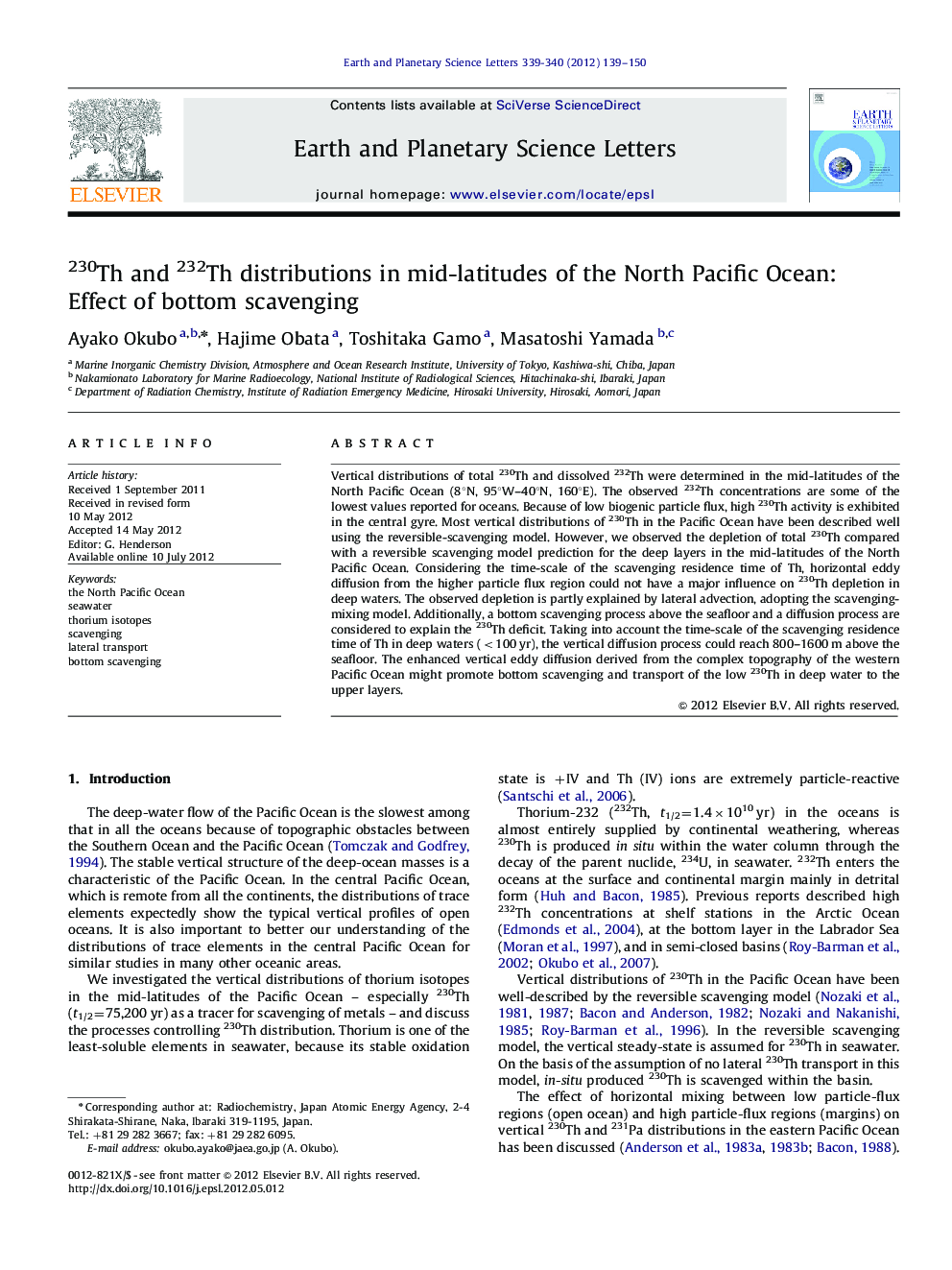| Article ID | Journal | Published Year | Pages | File Type |
|---|---|---|---|---|
| 4677431 | Earth and Planetary Science Letters | 2012 | 12 Pages |
Vertical distributions of total 230Th and dissolved 232Th were determined in the mid-latitudes of the North Pacific Ocean (8°N, 95°W–40°N, 160°E). The observed 232Th concentrations are some of the lowest values reported for oceans. Because of low biogenic particle flux, high 230Th activity is exhibited in the central gyre. Most vertical distributions of 230Th in the Pacific Ocean have been described well using the reversible-scavenging model. However, we observed the depletion of total 230Th compared with a reversible scavenging model prediction for the deep layers in the mid-latitudes of the North Pacific Ocean. Considering the time-scale of the scavenging residence time of Th, horizontal eddy diffusion from the higher particle flux region could not have a major influence on 230Th depletion in deep waters. The observed depletion is partly explained by lateral advection, adopting the scavenging-mixing model. Additionally, a bottom scavenging process above the seafloor and a diffusion process are considered to explain the 230Th deficit. Taking into account the time-scale of the scavenging residence time of Th in deep waters (<100 yr), the vertical diffusion process could reach 800–1600 m above the seafloor. The enhanced vertical eddy diffusion derived from the complex topography of the western Pacific Ocean might promote bottom scavenging and transport of the low 230Th in deep water to the upper layers.
► We observed the 230Th depletion for the deep layers of the North Pacific Ocean. ► The horizontal eddy diffusion could not have a major influence on 230Th depletion. ► The observed depletion is partly explained by lateral advection. ► Bottom-scavenging and diffusion process are proposed to explain the 230Th depletion.
